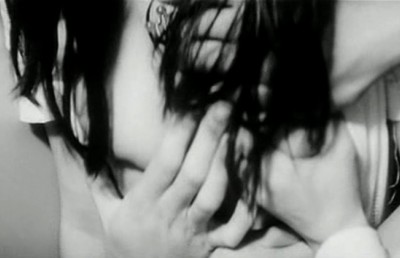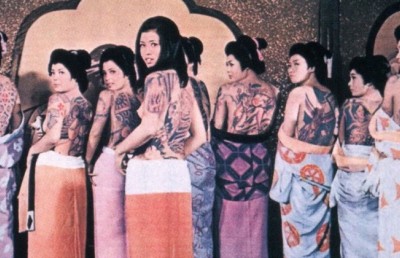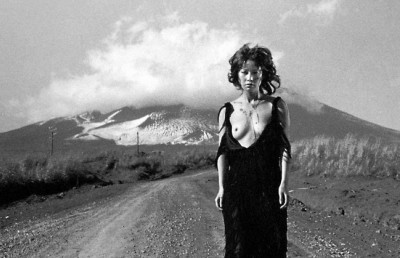An interview with director Mikhäil Kobakhidzé.
A Georgian Re-Discovery
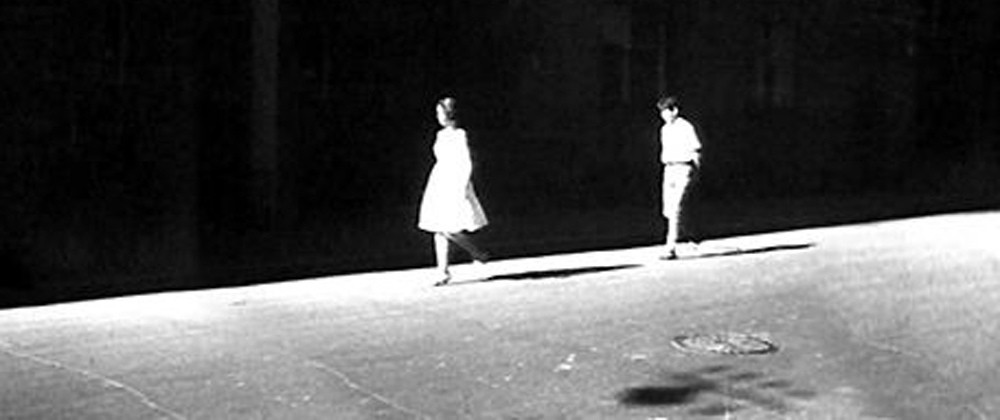
Introduction by Donato Totaro
Georgian director Mikhaïl Kobakhidzé directed five shorts between 1961 and 1969, at which point his artistic career was short-circuited by Soviet government censorship and bureaucracy. Seen over thirty years later, the films appear fresh and brimming with delicate humour. Kobakhidzé’s five short films may not change the face of film history, but they will surely add to our impression of Soviet film history. Kobakhidzé’s last film, The Musicians (1969), originally titled War and Peace (much more indicative of its theme), was meant as part of a larger feature project. The film, which toys with depth and perspective by setting two combative characters against a bleached, snowy-white landscape, was accused of that nasty neutralizing catch-all term, “formalism,” and production was halted. Kobakhidzé remained inactive cinematically until the fall of Communism in 1991. One can only lament the fact that such a gifted, unique vision was cut short in his prime. Recently Kobakhidzé has managed to attain financial assistance from France and, at age 58, is presently preparing his first feature entitled Variations on Love.
The five shorts, Young Love (1961), Carrousel (1962), La Noce (1965), The Umbrella (1967), and The Musicians (1969), are simple on the surface, but give evidence to a remarkably intelligent understanding of image/sound relations and montage. The films are reminiscent in spirit of Sam Beckett (minimalism), Buster Keaton (use of landscape, sense of melancholy), Jacques Tati (quasi-realist sense of acute social observation) and -especially The Umbrella and The Musicians, Norman McLaren (animation techniques and overall sense of humanism). The connection, however, appears wholly by chance or creative osmosis, since Kobakhidzé states in the interview that he has no precise filmic influences, but rather sees the filmmaking process within a broader sense that includes the zeitgeist and subconscious associations.
What is most striking about the films is his use of sound and music to generate both the general emotional condition of a scene and comic effect. For example, when the two potential young lovers finally meet on the streets of Moscow in Carrousel, chirping doves fill-in for their voices. Few directors outside of animation employ sound for comic effect, and very few as well as Kobakhidzé. The freshness of his work grows out of their ability to transcend generic category, slipping in/out of such styles as street realism, social satire, whimsical fantasy and avant-garde. For example, Carrousel begins with fast-motion shots of people streaming out of their apartments, going to work, etc., in a mechanical synchronicity reminiscent of the 1920’s “city films.” A few scenes later we are on an amusement park Ferris wheel and Kobakhidzé’s framing and strong geometrical compositions recall the glorious days of Soviet Constructivism. A few shots later we enter into the fast-motion world of comic slapstick, with the male protagonist doused by a passing street truck and angrily waving his fist at the guilty driver.
We met the charming Georgian director (who his interpreter and distributor Monique Gailhard affectionately referred to as Micha) on a sunny Montreal terrace during the 1997 Festival of New Media and Film. Mikhaïl Kobakhidzé displayed a bright, youthful exuberance and an appearance of complete serenity. Under a warm June sun, we talked to him about his work.
Since sound is such an important component of your films, were they shot silent or with direct sound?
MK: My films were all shot silent, without any direct sound. Sound, music, and sound effects were added later.
How does the treatment of sound enter your creative process?
MK: I use sound in a very measured and cautious manner. In my mind the soundtrack, as well as the music, has to provoke associations. Direct sound does not interest me at all.
Even today?
MK: If direct sound were necessary I would use it, but this is not my primary intention. What I want is for the soundtrack on the images to evoke associations and powerfully transmit want I want to say.
This idea of association is very Russian isn’t it? Kuleshov comes to mind, among others.
MK: Well, it is a principle that you find everywhere in the world. And it does not exist uniquely in music, but also in images.
You often use sound to achieve a comic effect. Like in Miracle in Milan, where two men are arguing and as the dispute heats up their voices transform into the sound of barking dogs.
MK: Ah yes, Vittorio De Sica. I’ve seen that film.
One scene in Carrousel is particularly funny. The scene where the man, who is made to appear as a predator because of the sound of a growling lion, tries to seduce the woman, and then gets slapped by a large blonde woman, at which point we hear the sound of breaking glass!
MK: He got what he deserved!
Do your films reflect your own sense of humor?
MK: Yes of course. As a general rule in auteur cinema, the film is a reflection of the creator. I could not create and make something that wasn’t within me.
In fact, for someone like Buster Keaton, comedy was a very serious business. Even in interviews he maintained a serious air and always considered comedy as something quite serious.
MK: Buster Keaton made classic comedy. He created situations especially so they could be funny, which is not the case with my films.
The synchronized choreography of the two characters at the end of Carrousel, where we see them at either side of a building on the street corner, reminded us of a similar scene in Keaton’s Navigator.
MK: I have not seen that film. You know that the end of Carrousel is, unfortunately, cut. As the original negative of the film is lost, we made an internegative from a print in which the end was missing. We should see the two characters exit the frame and the film end on the image of the empty street.
Are there any filmmakers who particularly influenced you?
MK: I can not name one particular filmmaker who had an influence on me. But in the sense that we don’t do anything in this world without being touched by something or someone, my subconscious has stored up information like everyone else’s, and I’m sure that I have been transformed by cinema’s rich history.
The name Jacques Tati is often mentioned in relation to your films. But we can also see parallels with a Scottish-born Canadian director, Norman McLaren, especially Neighbors (1952) with respect to The Musicians (1969) and A Chairy Tale (1957) with respect to The Umbrella (1967). Are you familiar with him?
MK: Unfortunately, I have not seen his films, but would very much like to. You know, the subconscious knows no borders. Life is a secret, a mystery…..
Even cinema?
MK: For the moment cinema perhaps is not yet a secret, but one day it will become a colossal secret, a mystery.
What makes you say that?
MK: The cinema has to arrive at a transformation, and has to make other discoveries and go toward something new, something it has yet to do. This may be found in the blowing wind, a falling leaf, in a capacity to find information in simple things. It is the same principle with which we try to re-transcribe our dreams. We transcribe them into images, ideas, and words. Maybe cinema should try the same process, which is to say to transmit images that the eye does not necessarily see.
The censors gave you considerable difficulty in the period when you shot your short films. The situation has surely improved and it must be easier to get films made in Georgia today?
MK: Censorship today has loosened. We could talk all we want, but the trouble is in finding money. When there is money, there is censorship. When there is no money, there is no censorship. The ideal of course is to have money and no censorship!
There is an interesting mix in your films between the on-location documentary quality and the fantasy aspect of your stories.
MK: You are correct in noting that I have always been served by a foundation based, not in documentary, but in real, actuality images, on which I graft my invented stories. But at the base, there always remains a texture of reality. This is very evident in La Noce (The Wedding) and Carrousel. On the other hand, in The Musicians I eliminated the notion of time and space. With these two notions gone, my hands were free to do whatever I pleased.
How did you achieve the effect of the flying umbrella in The Umbrella?
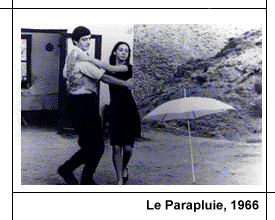
MK: Very easy. It’s very simple when there are no computers around! That’s when the manual labor begins. The umbrella was attached to a nylon wire and was moved around like a boom microphone.
It’s very effective.
MK: Well we still worked hard! Once we found the solution it was very easy.
The ending of The Umbrella is rather happy, even optimistic, with the woman walking toward the camera that is tracking back with her in the direction where she met her partner in the beginning.
MK: The sadness in this film rests beyond. Because the fact is there has been a change, with this attraction to someone else, and in spite of everything, things will never be the same. Something has passed and this element of sadness will always remain.
Effectively, there is a certain ambiguity in the final image. We are not sure if they ever meet.
MK: I conceived it with this ambiguity. That’s why I end the film on her image and do not show the man.
In La Noce, doesn’t the young woman trick here suitor by withholding her upcoming marriage?
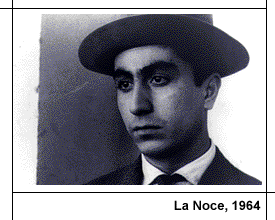
MK: There is no scene in the film where she gives clear evidence of romantic interest. There was a meeting between them, which led to other meetings. The film’s meaning itself rests in the fact that we tend to live in a fantasy world. In life we decide to do this and that, but in the end it is life itself that decides. And in general, it never goes the way we would like it to go.
Well, an element of trickery remains, like for example in the opening shot where the man wakes up to the sound of church bells. At first we think the sound is coming from outside his bedroom window. But then he turns off the radio and the church bells stop. Was this perhaps a commentary on the suppression of religion under communism?
MK: It’s entirely something else. What you are hearing is the sound of the Kremlin clock, and this sound is completely different from the sound of church bells. In turning off the radio, he is closing the Kremlin. That’s the message!
Well, that’s a much stronger message!
MK: Yes, certainly!
But it still remains a trick on the audience, a bit like the one the woman plays on the man, don’t you believe?
MK: People who do art or create things always have their intentions. Often those that watch the art give their interpretations. And each sees what they want. This notion of trickery is an interpretation that one could effectively find in La Noce. But it was not my initial idea or something I thought about.
Have you directed any other films apart from the five that played at the festival?
MK: Yes, in 1963 in Tbilisi, I made a short entitled 8 ½, which had nothing do to with Fellini.
What was it about?
MK: It is a love story in which I show everyday life in an inventive fashion that has nothing at all to do with reality. The story takes place in a little village where everyone knows everyone. Everyone greets everyone, except for our two protagonists.
Like the opposite of the beginning of Carrousel?
MK: Exactly. We see repeated street salutes that culminate with one hundred people on one side of the road saying hello to one hundred people on the other side of the road. A symphony of salutes! All of a sudden we hear a voice, the source of which is unknown, ask, “Hello. How is life?” The people reply, “Not bad, not bad.” At that point the censors call me and say, “How is that! People live well in the Soviet Union.” So I answer, alright, I will do what you say, I will change it. I will have them say everything is fine.” In reality, that is exactly what I wanted to do, with the following being the result:
(At this point Kobakhidzé assumes a very sarcastic tone)
-“Hello.”
-“Hello.”
-“How are you?”
-“Wow, super! Very well!”
When they saw that they destroyed the film, burned the negatives. The film no longer exists. I also made another film that I left behind at the institute (VGIK). When I returned the print had disappeared.
In-between your last film in 1969 and now, what have you been doing?
MK: I have never talked about it, but I have done a variety of jobs because I had a family to feed. I practice yoga very seriously, which has kept me from falling apart. But I don’t think we can do anything in life without preserving a sense of hope.
You must be extremely happy to be coming back to cinema after all these years.
MK: Yes, certainly.
We are very eager to see your feature film, tentatively entitled Variations on Love. When can we expect it?
MK: I can not answer that question right now. You’ll see!
With regards to hope, we see a relation between yourself and Andrei Tarkovsky.
MK: Tarkovsky was a strong believer, someone who was very religious.
You remind us of him physically as well, with your gestures, your voice, and the way you express yourself.
MK: (Laughing) You are not the first to tell me that.
Do you think that because of Stalinist oppression, religious faith has expressed itself even more powerfully now after the fall of Stalinism?
MK: In the Soviet Union faith, belief, was not turned toward God, but toward communism. By this I mean that all the pillars of the regime were atheist, and believed in the power of communism. But you can not prohibit someone from believing. You can close the churches, but that doesn’t mean people will become atheist. On the contrary, the more they closed down the churches, the more people believed in God. When you really feel the battle between Good and Evil, it exacerbates in some form the need to believe.
How is life for Mikhaïl Kobakhidzé today?
Life is always good for me. I am not speaking of the life I am leading myself, day to day. But I know there are places I have not yet been to where life is still good. And I know that one day I will get there.



